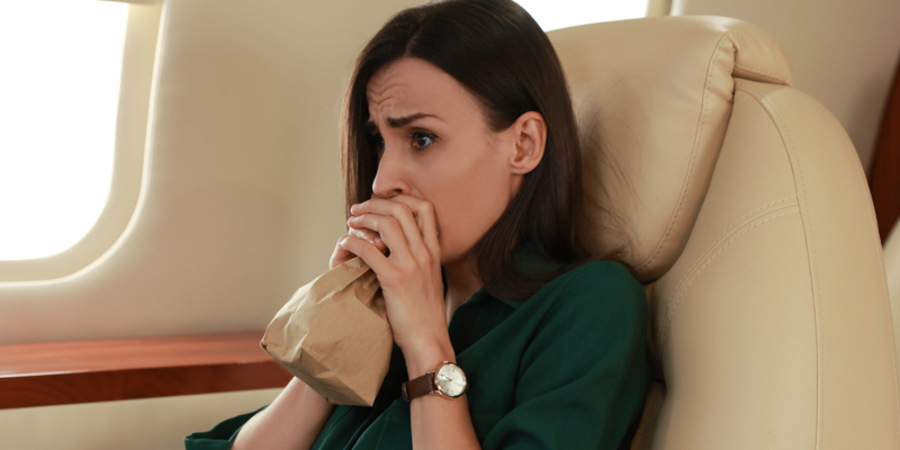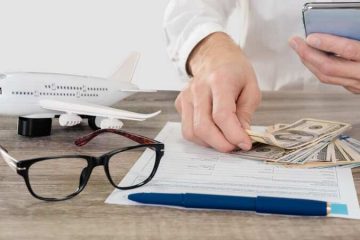People from all over the world can travel together via the popular and effective mode of air travel. However, for some people, just the thought of flying can cause them to feel extremely anxious and afraid. Millions of people around the world suffer from aviophobia, also known as a fear of flying, which can cause anything from minor discomfort to incapacitating panic attacks. In this blog, we’ll look at the meaning, causes, and helpful advice for overcoming it so you can enjoy your trip. This blog is for everyone, regardless of whether you enjoy traveling or find it terrifying.
What is a fear of flying?
Aerophobia is a severe aversion to air travel. Aerophobics may experience anxiety during various flight-related events, such as takeoff, landing, or being trapped inside the aircraft. Even though statistics show that air travel has one of the lowest death rates of all modes of transportation, you may be aware that your fear is unfounded, but you are unable to overcome your anxiety. It is also known as Aviophobia.
The majority of those who suffer from aerophobia don’t actually fear plane crashes. You might be more afraid of the intense anxiety that comes with flying.
What causes a person to fear flying?

The majority of the time, aerophobia has no known cause. Aerophobia almost never results from a traumatic flight experience. The triggers can be:
- Articles in the news describing acts of aviation violence, accidents, or terrorism.
landing and takeoff. - Fire or disease-related thoughts are circulating throughout the aircraft.
- Flight turbulence (bumpy conditions).
How common is fear of flying?
The fear of flying is fairly typical. One in six people have a serious fear of flying, and one in five frequent travelers use alcohol or prescription medications to ‘help’ them get through flights.
Suggested Read: How To Get A Frequent Flier Number And Its Benefits?
How to get over your fear of flying?
1. Deconstruct turbulence
Turbulence is nothing more than erratic wind currents that give airplanes a slight wobble, very similar to traveling on a rocky road or sailing through rough water. But seriously, there’s absolutely no reason to be concerned at all because airplanes are built to handle and reduce turbulence.
Don’t fear that the plane is about to come apart when you look out your window and see the wing bobbing up and down as the plane experiences turbulence, Instead, be grateful, for those flexing wings act as shock absorbers, reducing the jarring ride on a rough country road.
Today’s technology also helps predict turbulence zones so that pilots can avoid them and give passengers the smoothest ride possible.
2. Become familiar with safety features
Airplanes are mysterious, even if common, machines. They produce peculiar sounds and offer distinctive sensations. They are intricate. Additionally, they function in a system that has few similarities to what people are familiar with, according to Franke. Therefore, find solace in knowing how airplanes are made to handle emergencies. Knowing that you are prepared to handle various situations may help alleviate any anxiety because being prepared is crucial in any emergency situation.
3. Research past air disasters
Having knowledge of previous aviation accidents may seem counterintuitive, but it may make you feel more at ease during a flight. If you want to learn more about plane crashes, try watching a program like Mayday (also known as Air Disasters), which explains what went wrong, why it went wrong, and how the industry has changed to prevent similar incidents from occurring again.
Videos of all the tests that aircraft must pass before receiving the go-ahead to fly are also available. These tests range from stress tests that demonstrate the amount of wing deflection to extreme flight tests that push an aircraft to its absolute limits.
4. Interact with the flight crew
The flight attendants are available at all times. They are also experts in air safety: Airlines require flight attendants to complete in-person training once a year, as well as ongoing online training, to make sure they are current on emergency procedures.
5. Enroll in a flight course
By taking a flying lesson—if not in a real plane, then at least in a simulator—you can put an end to the mystery. This will give you a better understanding of how a plane operates when you board your subsequent flight as a passenger.
6. Stay away from triggers
Selecting a seat is one of the few flight-related decisions that passengers can make, and if flying makes you uncomfortable, it’s worth paying a little bit more for that option. Once you’ve identified your specific flying triggers, you can use your seat choice to help you stay away from them. Avoid the windows if you have a fear of heights. However, reserve a window seat if you must constantly be aware of what is happening outside. For those who feel claustrophobic or restless and need to move around, aisle seats can be helpful; in that case, upgrading to business or first class may be beneficial.
7. Discover a useful diversion
It’s not always that easy for everyone, but some people can lose themselves in a good movie or podcast, which could distract them from the fact that they’re flying.
Please take note that watching movies about plane crashes may be one of your triggers and cause severe anxiety.
8. Don’t delay the experience
The most effective method for overcoming a phobia is exposure therapy. Contrarily, avoidance only serves to amplify fears. So, the best thing you can do for yourself is to board a plane if you really want to get over your fear of flying.
Most studies on the condition reach the conclusion that the majority of sufferers are those who fly infrequently or never before in their lives. The relationship between the two is thus pretty clear: as with most things, it becomes easier to handle with continued exposure, while the longer you put it off, the more challenging the prospect of flying becomes. Finally, keep in mind that mild anxiety before a trip is completely normal. As a result, don’t get discouraged if you never fully conquer your fear of flying; just take it one boarding pass at a time.
Suggested Read: Everything You Need To Know About Flexible Flights
Fear Of Flying FAQs
How prevalent is a fear of flying?
A quarter of people, on average, are said to feel some level of anxiety or fear when they fly.
What signs or symptoms point to a flying phobia?
Sweating, trembling, an accelerated heartbeat, nausea, and breathing difficulties are possible symptoms.
Is it possible to treat a fear of flying?
Yes, there are numerous methods for overcoming a fear of flying, such as cognitive-behavioral therapy, exposure therapy, relaxation techniques, and medication.
What gives someone the fear of flying?
The fear of flying can have many causes. It might be brought on by a traumatic event from the past, a sense of helplessness in a given circumstance, a fear of heights or small places, or apprehension about aviation-related mishaps.



